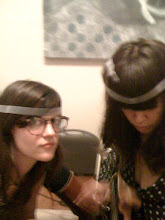 Larry Clark- Tulsa, 1968
Larry Clark- Tulsa, 196816 mm film, transferred to DVD
64 minutes, silent
Film still (c) Luhring Augustine, 2011
Untitled (painting) showcases conceptual, process-driven works which employ variations on traditional and non-traditional painting techniques within the wider field of contemporary abstract painting. The gallery's site generically states that "This exhibition is a snapshot of this moment in art making and offers an opportunity to contemplate their work together."
Despite the half-assed contextualization for the centrifugal force of the exhibition, I am ecstatic that Tulsa is on view. Especially because the film was recently found by the artist, and this will be it's first public screening in the US. It's really too bad that Luhring Augustine couldn't wait to exhibit the film alongside other works from Clark's oeuvre. Especially since the gallery recently co-organized his retrospective Larry Clark Kiss the Past Hello, which marked Tulsa's maiden voyage at the Musée d'Art Moderne de la Ville de Paris. On the occasion of the retrospective, an artist's book of work from 1962 to 2010 has been published by Luhring Augustine with Simon Lee Gallery, London. The publication is comprised of two soft cover books and poster in box with texts in both French and English ($60).
Made in Tulsa in 1968, Billy Mann and others from Clark’s seminal 1971 book, Tulsa, come to life in this 16mm black and white film footage. Much like the iconic photographs, the footage offers a glimpse into the group’s daily drug rituals. Clark shot the film on a rented Bolex camera and the film demonstrates his early interest in narrative filmmaking and directing.
When it first appeared in 1971, Larry Clark's groundbreaking book Tulsa sparked immediate controversy across the nation. Its graphic depictions of sex, violence, and drug abuse in the youth culture of Oklahoma were acclaimed by critics for stripping bare the myth that Middle America had been immune to the social convulsions that rocked America in the 1960s. The raw, haunting images taken in 1963, 1968, and 1971 document a youth culture progressively overwhelmed by self-destruction and are as moving and disturbing today as when they first appeared.
Larry Clark publications available for purchase via gallery website
Luhring Augustine
531 West 24th Street, New York, NY 10011
Tel: 1-212-206-9100 Fax: 1-212-206-9055
Tuesday - Saturday, 10am - 6pm
info@luhringaugustine.com






No comments:
Post a Comment